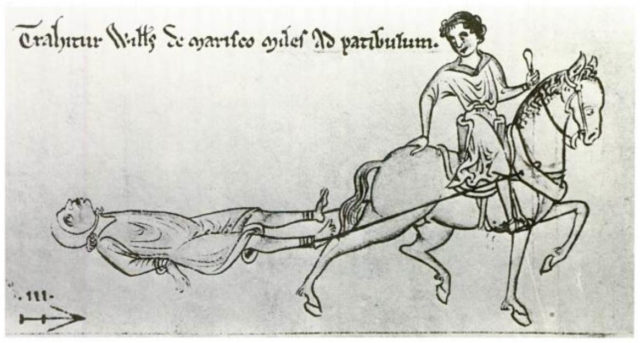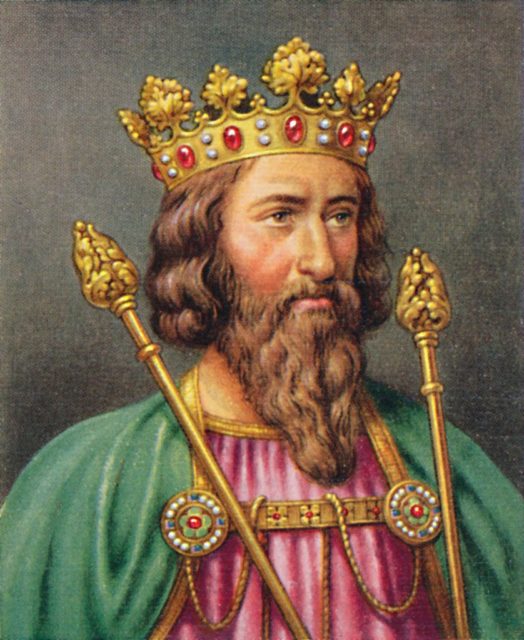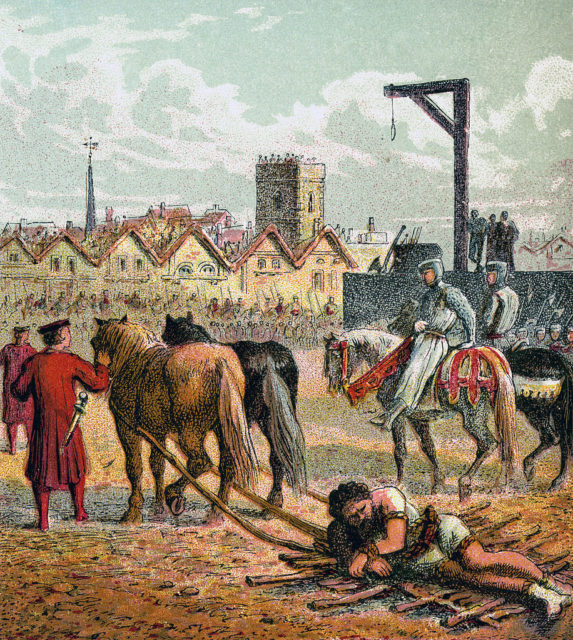
Introduction of the punishment
Although being hanged, drawn, and quartered was popularized during the reign of King Edward III in the mid-1300s, it was also recorded as a form of punishment in earlier years. One of the first official instances was recorded by English chronicler Matthew Paris in 1238. He wrote about one of the men at arms trying to kill King Henry III, only for the monarch to enact a brutal punishment when he failed.

Paris wrote that he was “to be torn limb from limb by horses (…) he was dragged asunder, then beheaded, and his body divided into three parts; each part was then dragged through one of the principal cities of England, and was afterwards hung on a gibbet used for robbers.”
An ‘official’ form of execution
Although not officially written into law as a form of execution, these earlier instances of being hanged, drawn, and quartered certainly happened. The punishment really became commonplace when Edward III implemented the Treason Act 1351, which outlined the crimes that constituted treason and their repercussions. Women were to be burned on a pyre, while men were hanged, drawn, and quartered.

Throughout the coming centuries, the legal parameters of the punishment changed. In 1547 the Treason Act was amended so that there must be two eyewitnesses to the accused’s crimes. This rarely helped the individual, however, as once allegations were made they were generally considered guilty. It wasn’t until the Treason Act of 1695 was written that those standing trial were finally allowed to have legal representation.
William Wallace
Scottish hero, and English villain, William Wallace is certainly the most famous person to be hanged, drawn, and quartered. In true Braveheart fashion, he led Scottish rebels against English forces on numerous occasions, seeing significant success. After being betrayed to King Edward I by one of his kinsmen in 1305, he was tried and found guilty of treason despite asserting, “I can not be a traitor, for I owe [Edward I] no allegiance. He is not my Sovereign.”

His punishment was particularly gruesome due to how much he had angered the king. He was dragged naked behind two horses for six miles through the streets of London before reaching the gallows, all the while being pelted with garbage and feces. When he arrived, he was hung with a noose, only to be cut down just before death. Finally, his genitals and intestines were removed and burned in front of him.
The final death blow was dealt when his heart was cut out, and for good
measure they also took his head. Wallace was indeed quartered, with his
remains being sent throughout the country to act as a warning to other
rebels. His head, however, remained in the city mounted on a spike near
London Bridge.
Πηγή : https://www.thevintagenews.com/2023/02/09/hanged-drawn-and-quartered/
Δεν υπάρχουν σχόλια:
Δημοσίευση σχολίου